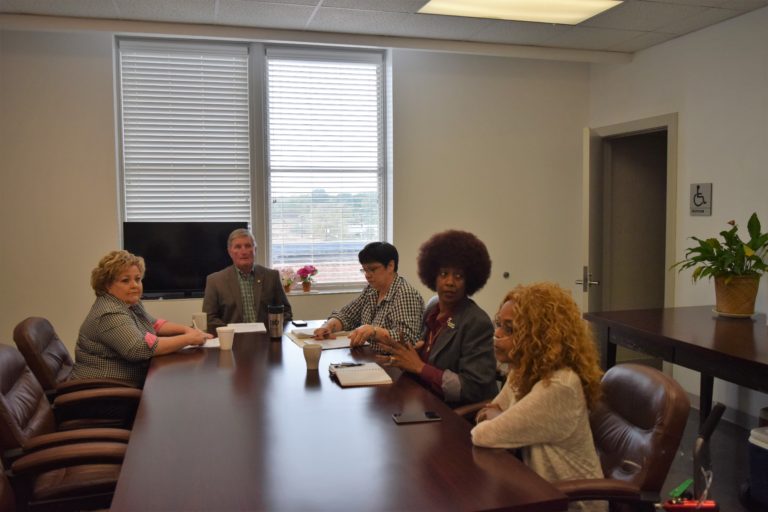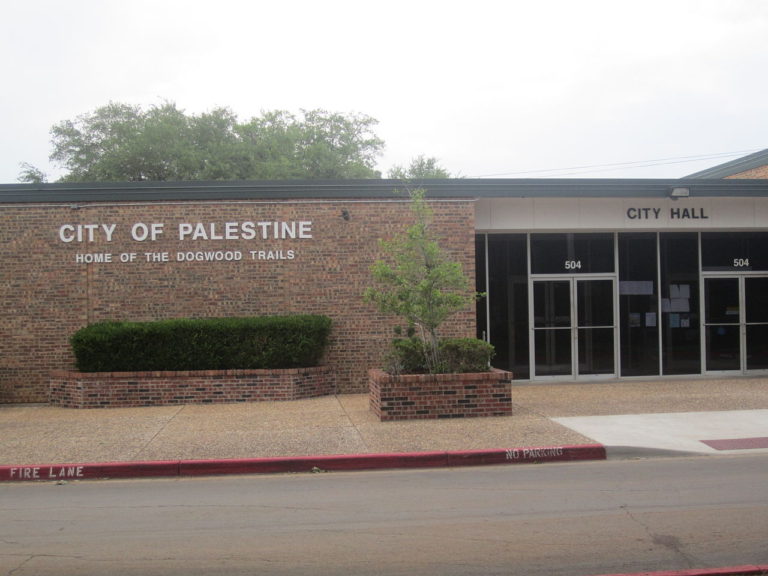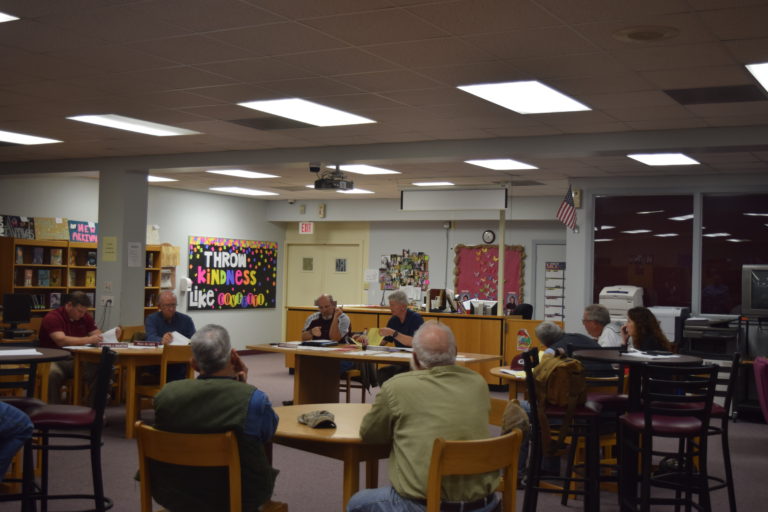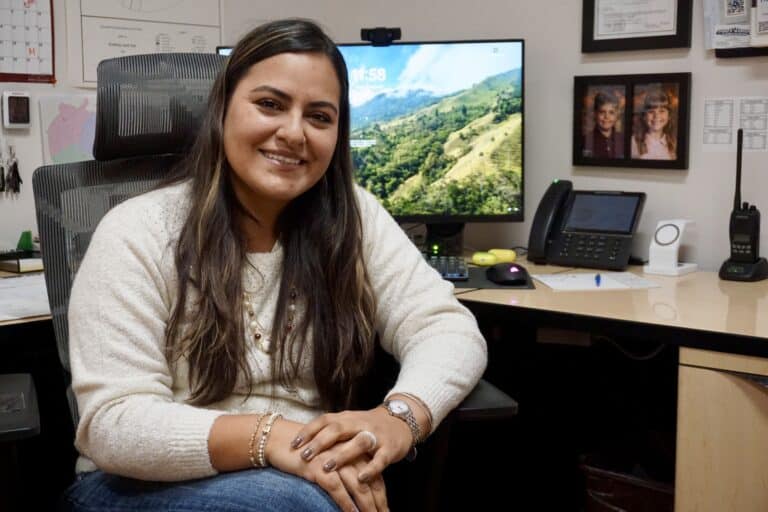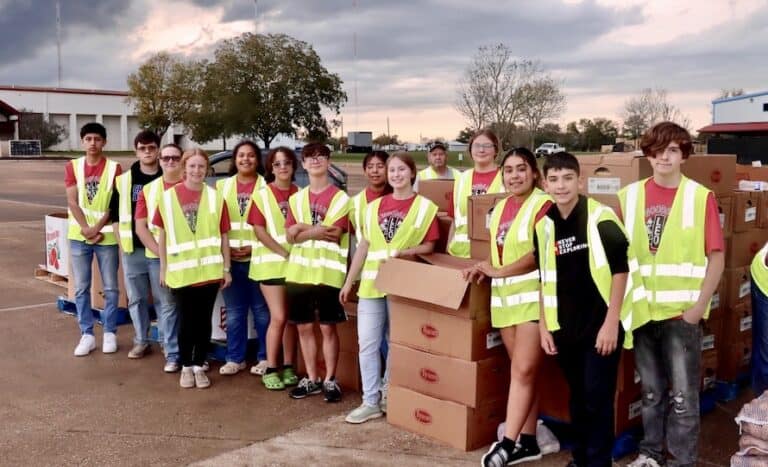Just Another Day at the Office

Anderson County Sale Barn Office, That Is
By Teresa Holloway
Messenger Reporter
ELKHART – The cows, calves and baby bulls were running fast and furious through the sale barn show pen Wednesday, Sept. 21.
It’s just another day at the office for Randy Lowery and his family and crew – but what a day! The Anderson County Sale Barn, aka Elkhart sale barn, was opened in 2002 by and has since been serving an important role in the community ever since, according to Lowery.
The company largely sells for and to small to medium sized ranches, a large part of the economy in this rural, agrarian based county.
From time to time, the barn handles large sales from the bigger ranches, as well, Lowery said, with just as much efficiency.
Lowery grew up in the livestock commission business. There are more than 25 years of marketing experience in the sale barn and the company serves Anderson and all the surrounding counties.
The Lowery family doesn’t just sell cattle, they provide a variety of services designed to assist cattlemen with transportation and penning. It’s more than just a business, Lowery said. “It’s a community oriented, family owned operation.”
John Merriweather is a committed rancher who frequents the sale barn. “I’ve been doing this all my life, 68 years,” he said. “I like the challenge of this lifestyle. It’s what my father did, it’s the way we were raised.”
“There are opportunities out there for young people, too. You just have to want to work,” he said. There is a certain freedom to the lifestyle, though it comes with deep roots to the land and to the ranch.
“You can set your own hours. Maybe this week, you work daylight until week, you get caught up, next week you go lightly. It’s the freedom of being your own boss.
“Sad thing, there’s just no young people getting into it. I’ve got two kids, one son, one daughter. They both have other jobs. This ranch creates an opportunity for them that will always be there,” Merriweather said.
The opportunity to enter and succeed in the agricultural or ranching industries are out there. Merriweather explained many of the ranchers and farmers are older and often, no one wants to replace them.
‘My family is a rodeo family. We go to rodeos on the weekend, as a family,” he said.
Family activities and ties to the bounty of the land are intrinsic values to many families in the area. History and family involvement are factors the Lowerys understand.
“This area has always been agriculturally related. Cattle are a main part of that. We have some timber here in East Texas. The cattle industry has always been a part of Texas.
“We have a lot of customers who run 50 head or less. That adds some diversity to their sales. They don’t have 150 or 200 head to sell at one time, so they bring them to us. Our sale barn has always taken care of the smaller farmers and ranchers we have around here.
“We have some bigger customers who sell 200 or 300 at a time, but our basic customer has 100 head or less,” Lowery explained.
That’s important, smaller ranchers and farmers are part of the life-blood of the community. “This country is good for cattle grazing. There are agricultural tax exemptions for having those cattle there. It is a job where a person can have a different occupation and have their cattle as a sideline. That adds money to their pocket, which in turn filters down to other local merchants,” he said.
“Our ranchers are getting older. We don’t have the younger generation coming in, and a lot of times we see people selling out because their children don’t want to follow them in the business.
“We like to see the younger folks stay, we like to see those farms and ranches stay in the family,” he said.
“We donate to back to our segment of the economy, agriculture. We do what we can to help the young ones; that’s who we like to see coming in,” he said.
The young ones do come, frequently. Chad and Karissa Martin, visiting relatives here in Texas, are out of state residents. Chad works on a dairy farm in West Virginia. He and Karissa stopped at the sale barn to compare notes, check out the local stock and just be involved in the local agricultural scene. By comparing the cows and calves of the two states, Chad and Karissa have a broader scope from which to base decisions at the dairy back home.
There is learning process, some of it involving the challenge Merriweather spoke of. Many, like the Lowery and Merriweather family ranchers have done the job for so long it seems second nature, but the challenge is there.
Challenges frequently go far beyond the heat, the cold, the mud, there is a lot of money involved.
“Pricing for different types of cattle, cows, calves and bulls is usually set by the cattle market every week. It goes up and it goes down. We never know which way it is going,” he added.
“A lot of factors are involved. The weather, for example, as long as we have good grass we usually see a big demand for young cows to go back to the pasture. If it gets dry, we’ll see people selling off numbers of their cattle to lighten the numbers in their pastures.
“We haven’t seen that this year, this has been an excellent year for grass. About five years ago, we had a drought situation and we are in a rebuild situation right now. We see people buying a lot of young cows and retaining their heifers to get those numbers built back up,” Lowery said.
Dusty trailers and pickups line up and wait as patiently as only cowboys can to pick up their four-legged purchases. Meantime, a hot East Texas sun beats down on the brims of well-used cowboy hats, just as it has for hundreds of years.
[email protected]

